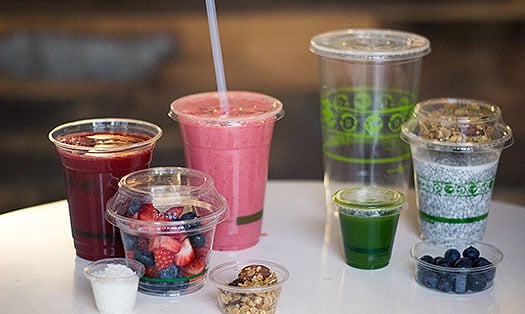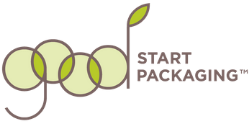As today’s market grows ever-greener, new technologies are emerging in an effort to meet the needs of industries seeking more environmentally friendly alternatives for packaging. Enter biodegradable plastics created with the help of poly lactic acid (PLA).
What are poly lactic acid plastics?
PLA plastics are clear or white bioplastics made from renewable sources, such as corn, sugar and beets. Sometimes referred to as “corn plastic”, this environmentally friendly packaging solution looks and feels like petrochemical based plastics, but is created entirely from plants which, by their nature, absorb carbon dioxide so reduce greenhouse gases. In addition, these bio-plastics break down into harmless elements shortly after their useful life instead of perpetuating for years like traditional plastic.

How are PLA plastics created?
- Harvested corn is soaked and ground so that the endosperm can be separated from the corn gluten and fiber.
- Enzymes are added to the starches in the endosperm, converting them into the sugar, dextrose.
- Lactobacilli bacteria is added to ferment those sugars into lactic acid, similar to the production of beer or naturally fermented pickles.
- This fermentation produces lactide molecules, which bond into long chains – polymers.
- The result of the process is pellets of poly lactic acid plastic, which can be processed into many different forms.
Poly lactic acid is extremely versatile
- It can be processed into a wide range of materials using casts, injection molding, extrusion, film and sheet casting, and spinning.
- PLA makes an excellent compostable packaging material in the form of bags, cups, bottles and jars, food packaging, disposable tableware, and the like, and is FDA approved and suitable for food contact.
- Because it degrades into lactic acid, which occurs naturally in the human body, it is can even be used in medical implants.
Benefits of poly lactic acid breakdown
- While typical petroleum based plastics can take thousands of years to breakdown, plant-based PLA plastics can be broken down in a suitable composting facility within 45 to 90 days.
- PLA plastic offers a stable shelf life, without degrading or disintegrating, but remains biodegradable, breaking down into carbon dioxide and water at temperatures greater than 140 degrees Fahrenheit and when exposed to relative humidity of 90 percent or more for approximately 60 to 90 days.
- No toxic fumes are emitted when PLA plastics are incinerated.
As traditional, petroleum-based plastics in the form of bags, food containers, and more continue to be banned worldwide due to the true costs they bring, both environmentally and economically, bio-based plastics offer a viable, biodegradable solution.
Ken Jacobus is CEO and founder of Good Start Packaging. He works with restaurants and other organizations around the U.S. to help them find the best sustainable alternatives to traditional plastic take out food containers. When not busy trying to eliminate landfills and plastic, he hikes, bikes, skis, reads, and plays with his family around his home in southern New Hampshire.





